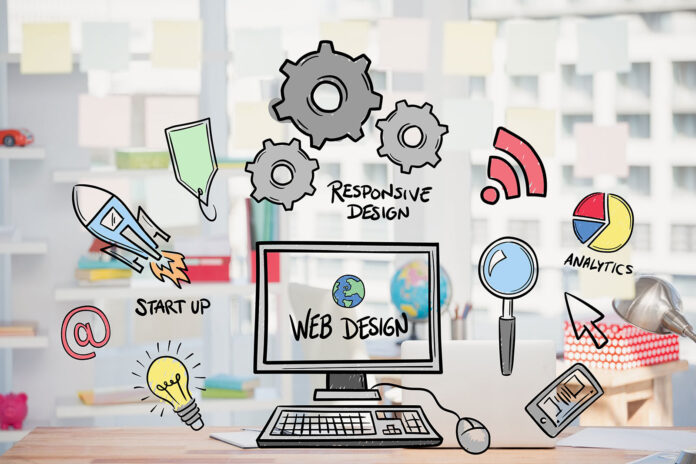Online educational platforms and applications are in high demand, owing to the COVID-19 pandemic situation worldwide. Are you aware of the fact that US-based edtech companies raised around 2.2 billion dollars in 2020? With these apps, students can learn at their own pace, pursue any course they want at the comfort of their home.
There exists a plethora of E-Learning app solutions and services. So, let us delve right into it.
What are the Various Types of Educational Apps?
The different types of educational apps are:
- Classroom Apps
There are two types of applications for students and teachers. The first is used in class and acts as instructional material for teachers, as well as assisting in the organization of the learning process and education.
A cloud-based application is the second category, which is utilized for distant learning. It collects all educational materials in one location and provides possibilities for communication between teachers and parents, as well as parental control. Some examples include Google Classroom, Kahoot, or Classtree.
- Brain Training Apps
It’s simply a group of mini-games for logic, memory, and attention, and it’s the closest type to the game applications on the list. The learning component is complemented with rich and attractive infographics reflecting the users’ abilities and progress. They are light and suited for any audience. Lumosity, Elevate, and MentalUP are some examples that fit the description.
- Online Courses
This type is geared for adults seeking new information, but faces time constraints. In this type of educational app, a training program is offered in an interactive format. The user gets access to unlimited learning resources, university materials, and much more. Some examples would involve Coursera, LinkedIn Learning, and iTunesU.
- Linguistic App
This is one of the most easily available educational apps. In terms of delivering learning information while playing, all language learning applications are comparable. Consider the level of knowledge of your users when creating an educational app for language learning, structure the material from simple to complicated, and employ a number of styles.
If you wish to stand out from the crowd, your best bet would be to apply technologies like in-app chat or progress tracking. You must also develop unique methodology. A few examples in this category would include DuoLingo, Memrise, and LiguaLift.
- Test Taking App
This type of educational software is primarily aimed at students and pupils, and it provides up-to-date curriculum training assessments for admittance, quizzes, and exams. One can easily track their progress and time their question solving. Most of these apps provide feedback instantly, so the students get to know where they are exactly lacking. Some examples are PocketAptitude, EduRev, and Gradeup.
- Educational Apps Specially Designed for Kids
Children are drawn to modern technology, and parents who are concerned about their child’s development from an early age are attempting to profit from their passion. These can be used for a variety of purposes, including learning to read, write, and understand science, as well as developing abilities.
Any idea can work; all you have to do is follow the rules of visual appeal and casualness. A few examples that you can explore are Quick Math Jr., ABCmouse, etc.
If you write a paper on this subject matter, it is imperative that you share more examples and actual reviews from users. For this, you can check out various academic service providers and their apps like Myassignmenthelp APP for Android and Myassignmenthelp APP for iOS.
Technologies that Go into Creating the Apps
If you are just about to design an educational app for the first time, you should take a look into the current trends of technology. Furthermore, you should think from the perspective of the end user and what would benefit them.
- Virtual Reality (VR)
Virtual reality allows for distant interaction in three-dimensional space and the development of a wide range of skills, from sketching to rhetoric. The benefits of virtual reality can be found in any educational program, such as Quiver for children’s coloring and InMind, which allows users to experience a voyage into the minds of those with mental illnesses. These options allow for total immersion in the learning process.
- Augmented Reality (AR)
AR brings with it stellar content visualization features. It enhances the real-life experience of utilizing the product. It finds application in every educational apps. One can gaze at deep-sky objects or human body anatomy.
- Artificial Intelligence (AI)
The technological advancement in the field of AI has made the application of Advanced Intelligent Virtual Assistant in many areas simple. In this regard, the IVA controls the briefing and overall management of the learning process. AI has led to the creation of smart algorithms that help evaluate, rebuild the design, complexity, and materials for them.
This will aid in adaptive learning. In addition to this, AI implementation will help you acquire scientific facts and figures. This is because machine learning algorithms determine the required intricacy of the material for an individual case.
Now that we know about the types and trends let us check out the development process in brief.
How are the Educational Apps Created?
In this section, we will check out the development process.
- Discovery
The creation process starts with the discovery phase. One has to identify the audience and their specific requirements. In this step, you have to choose a particular platform. However, in this day and age, your app should be optimized for both Android and iOS platforms. And students should be able to access the app from any device.
This step will, in turn, help you out in determining which technologies and frameworks your development team will select.
- Validation by Prototyping
You must commence your work by creating a prototype and conducting multiple tests until it works perfectly. You design the UX/UI and check its feasibility, and perform modifications for slower Internet speed. Next, you make it interactive by including images, videos, learning materials, etc.
- Development and Testing
The workflow is simple. The programmers code, while the quality engineers test the code. It is recommended that the engineers take advantage of the instruments or tools that are readily available. For instance, teleconferencing SDKs like Agora or Twilio is good for implementing audio or video group calls.
As far as testing is concerned, automated tests with services like BrowserStack is great. Moreover, one should conduct integration, unit tests, and more.
- Deployment
This step is not as easy as it sounds. One has to perform a stress test on the server component before he or she uploads it to App Store or Google Play. Moreover, the engineers must set up DevOps properly and consider ad-hoc distribution models (file or link sharing via messaging, or Mobile Device Management).
Hopefully, you were able to comprehend the educational app development and the solutions and services one gets. If you face issues while writing your paper checker , you should seek professional assistance from experts.
























